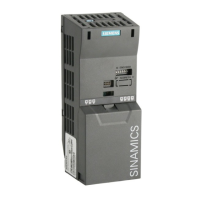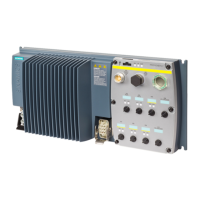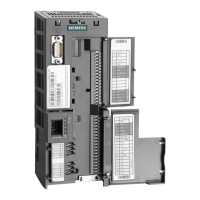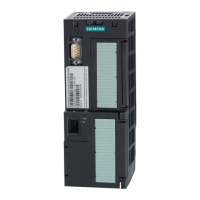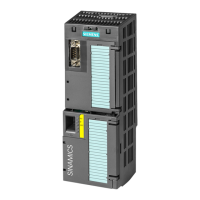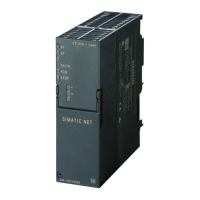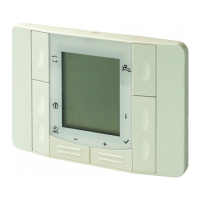Functions
8.23 Power Module protection
Control Units CU240S
8-158 Operating Instructions, 11/2006, A5E00766042B AA
the possibilities of assigning parameters only involves interventions below the shutdown
threshold which cannot be changed by users.
The SINAMICS G120 has the following thermal monitoring functions:
● i
2
t monitoring
The i
2
t monitoring is used to protect components which have a long thermal time constant
in comparison to the semiconductors. An overload with reference to i
2
t is present if the
inverter utilization r0036 indicates a value greater than 100 % (utilization as a % refers to
rated operation).
● Heatsink temperature
The heatsink temperature of the power semiconductors (IGBT) is monitored and
displayed in r0037[0].
● Chip temperature
Significant temperature differences can occur between the junction of the IGBT and the
heatsink. These differences are taken into account by the chip temperature monitoring
and are displayed in r0037[1].
When an overload occurs regarding one of these three monitoring functions, initially, a
warning is output. The warning threshold P0294 (i
2
t monitoring) and P0292 (heatsink
temperature and chip temperature monitoring) can be parameterized relative to the
shutdown values.
Example
The warning threshold P0292 for the temperature monitoring (chip/heatsink temperature) is
set to 15 ーC in the factory. This means that warning A0504 is output 15 ーC below the
shutdown threshold.
At the same time that the warning is output, the parameterized responses are initiated using
P0290 (default: P0290 = 2). Possible responses include:
● Reducing the pulse frequency (P0290 = 2 or 3)
This is an extremely effective method to reduce losses in the power module, as the
switching losses represent a very high proportion of the overall losses. In many
applications, a temporary reduction of the pulse frequency can be tolerated in favor of
maintaining the process
Disadvantage
The current ripple is increased when the pulse frequency is reduced. This can result in an
increase of the torque ripple at the motor shaft (for low moments of inertia) and an increase
in the noise level. When the pulse frequency is reduced this has no influence on the dynamic
response of the current control loop as the current control sampling time remains constant!
● Reducing the output frequency (P0290 = 0 or 2)
This is advantageous if it is not desirable to reduce the pulse frequency or if the pulse
frequency is already set to the lowest level. Further, the load should have a characteristic
similar to that of a fan, i.e. a square-law torque characteristic for decreasing speed. When
the output frequency is reduced, this significantly reduces the inverter output current and
in turn reduces the losses in the power module.
● No reduction (P0290 = 1)
This option should be selected if neither a reduction in the pulse frequency nor a
reduction in the output current is being considered. In this case, the inverter does not
change its operating point after the warning threshold has been exceeded so that the
motor can continue to be operated until the shutdown values are reached. After the
shutdown threshold has been reached, the inverter shuts down (trips) with fault F0004.

